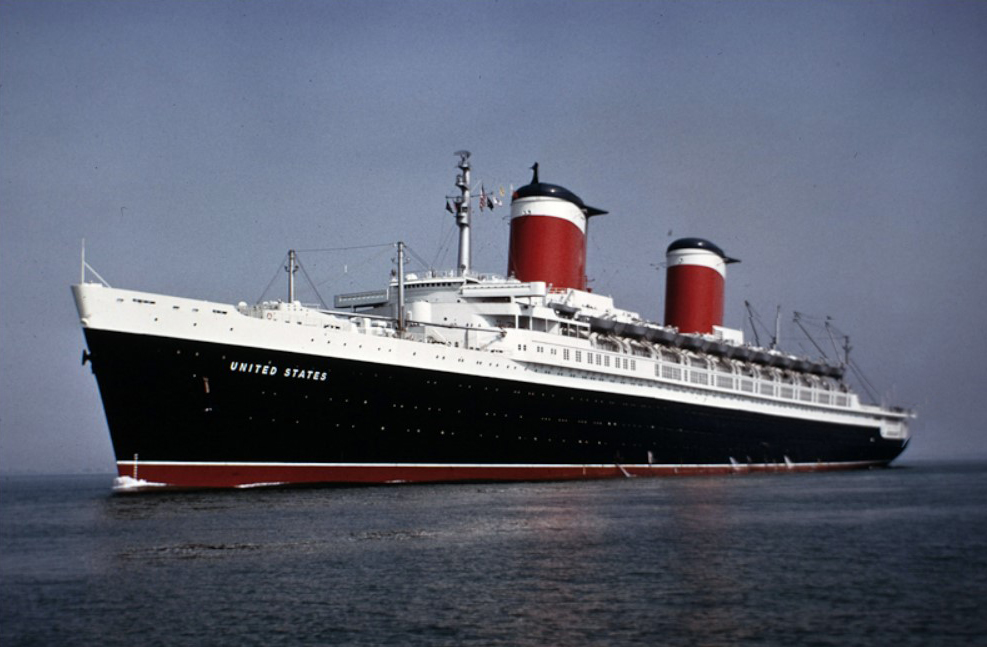SS United States: A Comprehensive Biography and Overview
The SS United States, an American ocean liner, is a historical and cultural icon that captured the imagination of many during its time of service. Known for its speed, elegance, and patriotic design, the ship was not just a means of transportation but a symbol of American innovation and luxury. This article delves deeply into the life of the SS United States, exploring its history, significance, and legacy through comprehensive facts, figures, and an in-depth look at the ship’s story.
Early Beginnings: The Birth of the SS United States
The SS United States was conceived as a response to the growing need for faster and more luxurious transatlantic liners. The United States was in the midst of a global competition, with European nations like the United Kingdom and France dominating the ocean liner industry. In the 1940s, the U.S. government, concerned about national security and the need for rapid troop movement during wartime, decided to invest in a ship that could serve both as a passenger liner and as a potential troop transport.
The project was approved in 1949, and the design was entrusted to the renowned naval architect William Francis Gibbs. The SS United States would be designed to surpass any existing ocean liner in terms of both speed and safety. Its construction was made possible by a combination of private investment and government funds, with the primary aim being to create the fastest and most luxurious ship the world had ever seen.
Construction and Design: A Marvel of Engineering
The SS United States was built at the Philadelphia Naval Shipyard, with construction beginning in 1950. The ship’s design was groundbreaking in many ways. Measuring 990 feet in length, 101 feet in beam, and 20 stories high, the SS United States was one of the largest passenger ships ever built at the time. Its sleek, modern design was heavily influenced by the speed and efficiency of military vessels, combining the best of both civilian and military technology.
Key features of the SS United States’ design included:
- Powered by Four Turbo-Electric Engines: The ship had four turbo-electric engines that provided it with exceptional power, enabling it to reach a top speed of 38 knots (approximately 44 mph). This made the SS United States the fastest ocean liner in the world at the time.
- Hull Design: The ship’s hull was designed to minimize water resistance, and its streamlined shape was not just for aesthetic appeal but also for efficiency and speed.
- State-of-the-Art Interiors: The interior of the SS United States was the epitome of luxury. It featured a range of deluxe accommodations, including suites, dining rooms, and lounges that offered the highest level of comfort and elegance. The design was intended to provide passengers with the ultimate experience during their transatlantic crossings.
Maiden Voyage and Speed Record: A Historic Moment
The SS United States made its maiden voyage from New York City to Southampton, England, on July 3, 1952. This was a momentous event, not only for the ship itself but for American maritime history. As soon as it embarked on its maiden journey, it began to break records.
During the maiden voyage, the SS United States set the transatlantic speed record by crossing the Atlantic in just 3 days, 10 hours, and 42 minutes. The ship maintained an average speed of 35.59 knots, beating the previous speed record set by the British liner Queen Mary.
The speed and efficiency of the SS United States were not only a testament to American engineering but also a source of national pride. It demonstrated that the United States had the capability to build a vessel that could surpass its European counterparts in both speed and design.
The SS United States in Operation: A Symbol of Luxury and Innovation
Following its maiden voyage, the SS United States continued to serve as a flagship for United States Lines, the American shipping company that operated the vessel. The ship primarily served the New York to Southampton route, offering luxurious travel accommodations for wealthy passengers. Its interiors were designed to reflect the grandeur of the ship’s mission, with elaborate dining rooms, salons, and even a spacious ballroom that hosted live entertainment.
Onboard, passengers could enjoy a range of amenities, including:
- Fine Dining: The ship boasted some of the finest dining options of the time, including the America’s Cup Room, which was designed to accommodate the elite passengers traveling aboard.
- Luxurious Suites: The ship’s suites were equipped with top-tier furnishings, private bathrooms, and panoramic windows that offered breathtaking views of the Atlantic Ocean.
- Entertainment and Leisure: The SS United States was equipped with a range of entertainment options, from live music and performances in the grand ballroom to a variety of lounges and spaces for socializing.
In addition to its passenger service, the SS United States was also a key strategic asset during the Cold War. Due to its speed and military capabilities, the ship was kept in reserve for potential use as a troop transport, should the need arise during wartime.
Decline in Service: Changing Times and the Rise of Air Travel
By the 1960s, the SS United States began to face growing competition from air travel, which was becoming increasingly popular. The advent of commercial jet airliners meant that fewer people were choosing to travel by sea. Despite its luxury and speed, the SS United States was unable to compete with the convenience and affordability of flying.
The ship’s decline in popularity was further exacerbated by the rise of more modern and specialized cruise ships. Throughout the late 1960s and 1970s, the SS United States continued to operate, but its commercial success began to wane.
In 1969, United States Lines officially retired the SS United States from active transatlantic service, and the ship was put into dry dock. However, the vessel was not immediately sold or scrapped. The company had difficulty finding a buyer for the ship due to its size and maintenance costs, leading to a long period of uncertainty regarding the future of the SS United States.
Attempts at Revival: A Search for Purpose
In the following decades, several attempts were made to revive the SS United States, but none of them were successful. In the 1970s, there were plans to convert the ship into a luxury hotel or a floating museum, but financial difficulties and logistical challenges prevented these plans from coming to fruition.
In 1984, the ship was sold to a group of investors who intended to refurbish it and bring it back into service as a cruise liner, but the project never materialized due to a lack of funding. In the late 1980s and early 1990s, various proposals were made to turn the SS United States into a permanent tourist attraction, but none of these plans came to fruition.
By the early 2000s, the ship was docked in Philadelphia, where it remained deteriorating for years. A campaign led by preservationists and maritime enthusiasts emerged to save the SS United States from being scrapped, but by then, the ship had suffered significant wear and tear.
The Preservation Effort: A Lasting Legacy
In the 2010s, the SS United States Conservancy, a non-profit organization dedicated to preserving the ship, worked tirelessly to save the liner. The group sought to find a suitable buyer and develop a sustainable plan for the ship’s future, including restoring it to its former glory. The organization launched public campaigns to raise awareness of the ship’s historical significance, urging both private investors and public officials to support efforts to save the vessel.
As of 2021, the ship remains in a state of disrepair, though efforts to preserve it continue. While the SS United States has not been restored to its former grandeur, its legacy as a symbol of American engineering, luxury, and maritime history remains intact.
Key Facts and Figures:
- Length: 990 feet
- Beam: 101 feet
- Gross Tonnage: 53,330 tons
- Top Speed: 38 knots (44 mph)
- Maiden Voyage: July 3, 1952
- Crossing Time Record: 3 days, 10 hours, 42 minutes (New York to Southampton)
- Passenger Capacity: 2,000 passengers (1,000 first-class and 1,000 tourist-class)
- Crew: 1,000 crew members
The SS United States’ Enduring Legacy: A Symbol of American Innovation
Though the SS United States no longer sails the high seas, it remains an important part of American maritime history. Its legacy is one of innovation, speed, luxury, and patriotism. The ship represents the peak of American design and engineering during the mid-20th century, and its influence can still be seen in the modern cruise industry today.
The SS United States stands as a tribute to American ingenuity, a vessel that not only made waves in the world of ocean travel but also served as a beacon of American strength and technological advancement during the post-war era. It remains an enduring symbol of the golden age of ocean liners and continues to captivate the imaginations of those who dream of adventure on the open seas.
Conclusion: The Timelessness of the SS United States
The SS United States is more than just a ship; it is a cultural and historical artifact that encapsulates an era of boldness and ambition. From its groundbreaking design to its unmatched speed, the SS United States embodied the spirit of post-war America. While the future of the ship may still be uncertain, its place in history as a marvel of engineering and a symbol of luxury and national pride is assured.






